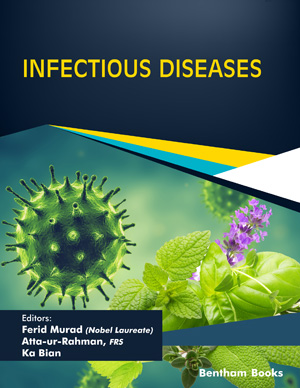
Abstract
Background: Herbal remedies are used by 80% of the Asian population in primary health care as per WHO. According to current research, the herbal medicine market was valued at nearly USD 166 billion in 2021 and is expected to reach approximately USD 348 billion by 2028. Increased incidence of chronic conditions such as diabetes, asthma, coronary artery disease, osteoarthritis, has fueled the growing interest in traditional herbal and plant-derived treatments among researchers. In addition, rural communities in developing nations have renewed interest in herbal treatments due to lower cost and easy availability.
Objectives: Aim of the paper is to highlight the role of five of more commonly used herbal medicines that are Ginkgo biloba, Garlic, Flaxseed, Ginseng, Salvia miltiorrhiza in cardiovascular disorders.
Methods: A PubMed search was done using the keywords Herbal Medicine, Ginkgo biloba, Garlic, Flaxseed, Ginseng, Salvia miltiorrhiza. Articles which were available for free access were utilized. No formula inclusion or exclusion criteria was followed. A total of 42 papers were included for the study.
Conclusion: Although there have been encouraging outcomes with the use of these herbal medications, many of these products are poorly monitored and are yet to be studied in detail regarding their adverse effects. Moreover, these medicinal products are known to interact with various drugs. To compete with the expanding pharmaceutical industry, more medicinally helpful herbal items must be used and scientifically validated.
Graphical Abstract
[http://dx.doi.org/10.1001/jama.287.3.337] [PMID: 11790213]
[http://dx.doi.org/10.1016/j.jacc.2009.07.074] [PMID: 20152556]
[http://dx.doi.org/10.5543/tkda.2017.79160]
[PMID: 12813616]
[http://dx.doi.org/10.5543/tkda.2013.15146] [PMID: 23703557]
[http://dx.doi.org/10.1007/s11906-005-0025-0] [PMID: 16061046]
[http://dx.doi.org/10.1016/S0002-8703(03)00084-X] [PMID: 12766736]
[http://dx.doi.org/10.2174/0929867053363397] [PMID: 15638738]
[http://dx.doi.org/10.1016/S1875-5364(15)30002-9] [PMID: 25835361]
[http://dx.doi.org/10.2174/1874467214999210111222918] [PMID: 33430756]
[http://dx.doi.org/10.2174/1381612822666161010105242]
[http://dx.doi.org/10.1038/aps.2012.126] [PMID: 22941285]
[http://dx.doi.org/10.1161/STROKEAHA.108.523480] [PMID: 18845796]
[http://dx.doi.org/10.1016/j.psc.2012.12.006] [PMID: 23538078]
[http://dx.doi.org/10.1161/CIRCOUTCOMES.109.871640] [PMID: 20123670]
[PMID: 2947093]
[http://dx.doi.org/10.1080/00926239808404927] [PMID: 9611693]
[http://dx.doi.org/10.1007/s11606-005-0114-4] [PMID: 16050865]
[http://dx.doi.org/10.1161/HYPERTENSIONAHA.113.02094] [PMID: 24126178]
[http://dx.doi.org/10.3945/jn.114.204594]
[http://dx.doi.org/10.4297/najms.2011.3411] [PMID: 22362450]
[PMID: 25050296]
[http://dx.doi.org/10.3390/nu12030872] [PMID: 32213941]
[http://dx.doi.org/10.1093/jn/136.3.736S] [PMID: 16484553]
[http://dx.doi.org/10.1016/S1875-5364(19)30088-3] [PMID: 31703752]
[PMID: 3937909]
[http://dx.doi.org/10.1016/j.semcancer.2020.11.020] [PMID: 33301861]
[http://dx.doi.org/10.3389/fmicb.2021.613077] [PMID: 34394014]
[http://dx.doi.org/10.1016/j.fct.2017.07.019] [PMID: 28698154]
[http://dx.doi.org/10.2165/00002018-200225050-00003] [PMID: 12020172]
[http://dx.doi.org/10.1186/s13020-019-0231-3] [PMID: 26850342]
[http://dx.doi.org/10.1016/j.biopha.2020.110915] [PMID: 33254433]
[http://dx.doi.org/10.1016/j.taap.2003.09.011] [PMID: 14761678]
















